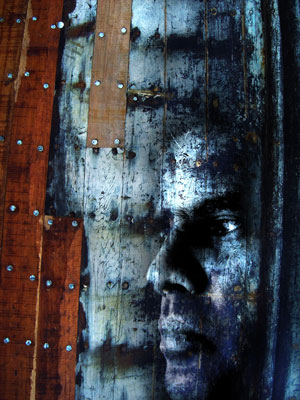The Artist in Abro
By Tehmina Ahmed | Art | Arts & Culture | Published 15 years ago
Khuda Bux Abro is a designer with the soul of an artist. Abro started sketching while still at school, and his illustrations first appeared in Hilal-e-Pakistan in the early ’70s. He began to paint and to design award-winning book covers. The writer Amar Jaleel spotted Abro’s talent and advised him to go to the National College of Arts, Lahore, to hone his skills. Abro recalls he opted for the design department, although the artist Zahoorul Ikhlaq thought he had an aptitude for painting and advised him to join the Fine Arts department instead.
Prior to applying for admission, Abro had displayed his paintings and calligraphy at solo exhibitions at the Arts Council, Karachi, and Sindh Museum, Hyderabad, and thought he would be better off learning about photography and graphic techniques.
Abro spent some years in Lahore after graduation, working for the Viewpoint among other publications. Moving back to Karachi, he set to work as a cartoonist. Abro joined the Newsline team at the outset and mastered the nitty-gritty of digital layout on the job. Quite an achievement, because this was the first magazine to step out of the cut-and-paste mode into the digital age.

Abro’s graphic training is apparent, but the treatment is thoughtful and sensitive.
Illustrations on political themes have always been a part of Abro’s work and the activist bent is often in evidence. However, there is another side to the man that finds expression in his personal work, some of which he describes as visual poetry.
Recently, the Poppy Seed Gallery in Karachi showcased a selection of Abro’s work titled ‘The Fifth Season.’ The diverse genres on display come as something of a surprise, until one learns that this is a solo show held in Karachi after a hiatus of decades — a retrospective of sorts.
To begin with, there is painting in the style to which he is accustomed. There is a series of digital images printed on canvas, exploring abstract notions.
Then there is a series of self-portraits, the ‘Aks-e-Wujood‘ series. The base for the work is digital photography, although other media occasionally play a part. The series is interesting and some of the work quite striking. Abro’s graphic training is apparent, but the treatment is thoughtful and sensitive.
The surprise element in the show is that of calligraphy. In some ways not that much of a surprise because this is calligraphy of a secular persuasion. Abro laments the fact that the art of calligraphy was distorted during the ‘Islamic’ years of Zia-ul-Haq. Selecting the verse of Mirza Ghalib for calligraphic interpretation is Abro’s revenge. The work is well executed in transparent inks with subtle colours and a recurrent design motif.
Employed as a professional illustrator, Abro continues to search for the ‘Fifth Dimension,’ the elusive quality of colour, light and line that transforms an artist’s perception into a piece of art for others to share. For Khuda Bux Abro, art is part and parcel of everyday existence, not a means to an end but an end in itself.


